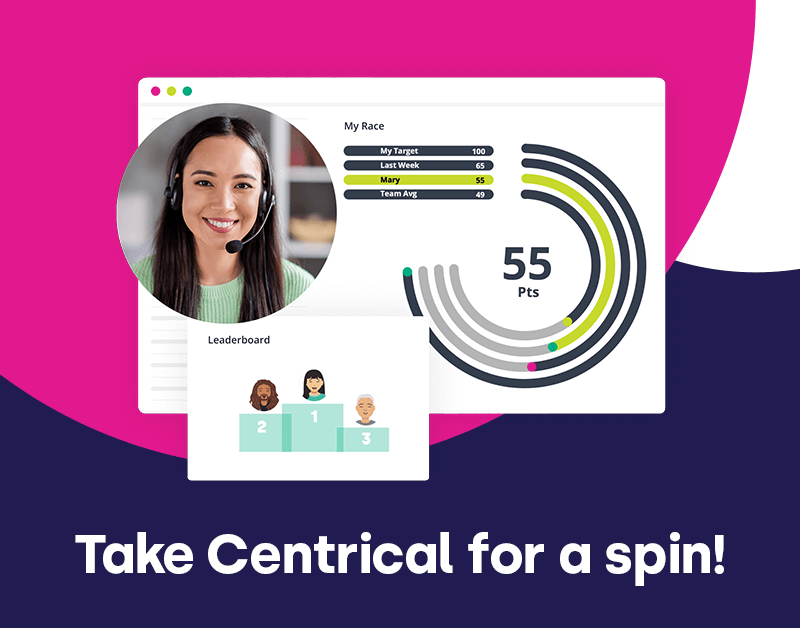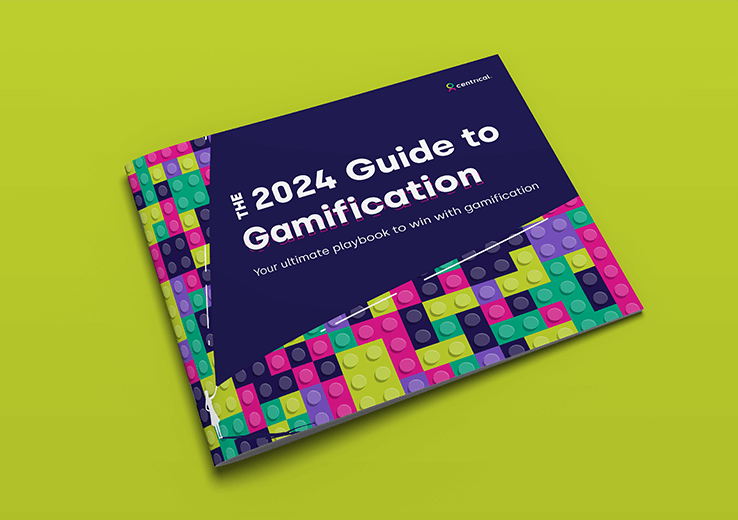Reflect While You Wait: Uncovering the Hidden Power of Betting and Self-Evaluation in Gamification
They say patience is a virtue, but most of us aren’t that patient. Fortunately, we live in the age of instant gratification. In fact, this is one of the drivers behind enterprise gamification – immediate feedback on performance.
We believe in real-time gamification – showing people how they are doing without making them wait for results. From a product design standpoint, we’ve put in a lot of effort in creating the integrations that will allow us to have real-time performance data injected straight into our gamification platform. The idea was simple: employees will see how they are performing in real time, and adjust their performance accordingly – real time feedback is important. But life isn’t that simple…
Reality Bites, or Some KPIs Simply Need More Time
Yet, sometimes, in real contact centers, it is impossible to get real-time performance data. What do you do then? Is your gamification solution broken?
The answer is that even when gamification KPIs are not real-time they still are very valuable for employee engagement and motivation. They are still about self-reflection about performance, and still can drive results.
Here are some examples of cases where KPIs are delayed:
- First call resolution (FCR) – this KPI measures whether the call center is properly addressing the customer’s need the first time they call, thereby eliminating the need for the customer to follow up with a second call. Measuring this properly requires that we define a “contact window” – the maximum amount of time that is allowed to elapse between interactions in order for them to contribute to FCR. If we set the contact window to, let’s say, 24 hours, this KPI, by definition, does not allow us to provide real-time feedback for the agent.
- Customer satisfaction surveys – yes, this KPI shouldn’t necessarily present us with a problem. The best time to conduct a customer satisfaction survey is actually when the experience is fresh in customer minds. But sometimes, for reasons of customer responsiveness, these surveys are carried out later, impacting the ability to create a real-time feedback on customer satisfaction.
- Quality reviews – this isn’t a KPI per se, but a training method that requires past interactions to be reviewed and rated by the agents’ supervisors. This is a wonderful way of coaching the agents and improving the quality of their interactions with the customers. However, as these reviews are only done several days later, real-time feedback is definitely not an option.
Are Delayed KPIs an Issue?
So how would agents use the system when some of the KPIs aren’t real time? Would they care about KPIs that show something that happened a few days ago? And what about course-correction? Are we losing time in which agents could have assessed their past performance and course-corrected to meet their targets?
Solving this issue was an idea first suggested by one of our customers, and it was simple and elegant: we simply let the agents rate themselves, using their self-evaluation data as a simulated KPI data until the real data comes in.
Introspection (or self-evaluation) has been a subject of philosophical and psychological debate dating back to the time of Plato. The point here isn’t whether the agents are accurate in their self-evaluation. The point is that for gamification to work, we need people to reflect on their performance and this solution did just that.
In the hectic environment of a contact center, agents don’t normally find the time to reflect on their previous interactions and analyze their strengths and weaknesses. But there are many benefits to stepping back from an experience to consider whether we could have done something differently, or when we want to remind ourselves what we are doing well or what we have accomplished.
We’ve come to realize it can actually help us keep the agents engaged and mindful of the work they were doing. This was a perfect solution.
Care to Make It Interesting? Betting on Self-Evaluation Results
At this point, everything started to come together. We have previously talked about how the act of wagering can be a great motivator, and these self-predicted performance reviews we now have, are exactly how we harness the mesmerizing power of predictions to work wonders in gamification.
Now we asked whether agents were willing to bet on the accuracy of their self-evaluations. This was done using head-to-head matches. Based on the self-evaluation simulated KPI data, the agents were asked to place a bet on their chances to win the weekly match. The final results of the match, however, were determined based on the actual KPI data reported to our platform by customer satisfaction surveys, supervisors’ reviews and other statistical data – the “real” KPI.
If the agents were way off in their assessments, it could even be for the better. They were then likely to lose their bets and consequently work harder to be more accurate the following week. This resulted in more self-reflection, tuning in to gauge customers’ satisfaction level. Agents also became more attentive to their supervisors’ instructions – they had to if they wanted their self-evaluation to be aligned with that of their supervisors.
…
So, this project is off to a great start and in the process, we’ve managed to perfect another game mechanic to add to our arsenal. This is, of course, my account of the events – a product of my own self-reflection over the last couple of weeks. Nevertheless, it has provided me with an insight into the entire process and definitely more than a few lessons for the future.
But don’t take my word for it, try the Gameffective platform and see for yourself.
Engage and motivate your frontline teams
Improve performance with an AI-powered digital coach
Deliver world class CX with dynamic, actionable quality evaluations
Boost performance with personalized, actionable goals
Nurture employee success with the power of AI
Listen and respond to your frontline, continuously
Drive productivity with performance-driven learning that sticks
Drive agent efficiency, deliver client results
Keep tech teams motivated and proficient on products and services while exceeding targets
Maintain compliance while building customer happiness and loyalty
Enlighten energy teams to boost engagement
Engage, develop, and retain your agents while driving better CX
Improve the employee experience for your reservations and service desk agents



 Madeleine Freind
Madeleine Freind
 Natalie Roth
Natalie Roth Linat Mart
Linat Mart












 Doron Neumann
Doron Neumann Gal Rimon
Gal Rimon Daphne Saragosti
Daphne Saragosti Ella Davidson
Ella Davidson Ariel Herman
Ariel Herman Ronen Botzer
Ronen Botzer